Growing cherries in the garden

The record popularity of cherries is due to the aroma and unique taste of the berries. In addition, the aesthetics of both the fruit and the plant itself plays an important role. Do not forget also about the variety of varieties known today. In principle, this culture is unpretentious. However, some of the nuances of growing cherries in the garden are still worth exploring. Otherwise, you will hardly have to count on a plentiful and high-quality harvest.
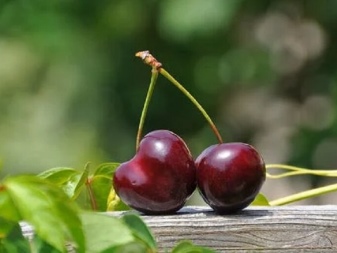
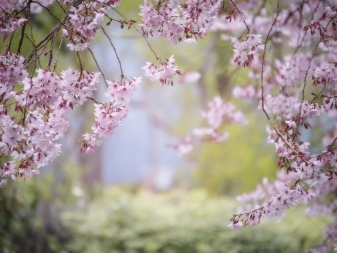
Growing features
It's no secret that now in Russia cherry trees grow in almost every country house. In addition to the beautiful appearance of trees and bushes, as well as the taste of berries, an equally important role is played by the fact that this plant is a honey plant. Another advantage is the ease of growing a crop that requires relatively uncomplicated care. Despite the fact that cherries grow in almost any climatic conditions, they are characterized by a record yield.
A bountiful harvest is always the result of proper care, regardless of the characteristics and varietal properties of cherries. But, unfortunately, in some cases, even constant care of the plant does not allow achieving the desired results.
The reason for such troubles is the mistakes made by gardeners when growing crops.
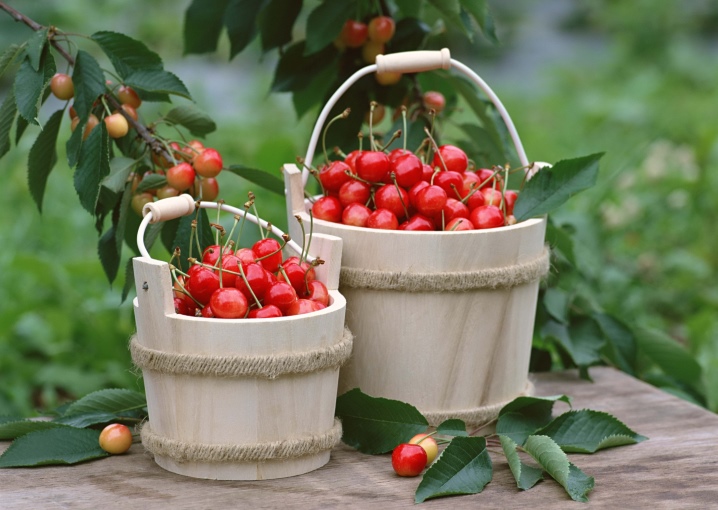
And one of the key points in this case will be the correct landing. In this context, it is necessary to highlight the following important points.
- At the stage of material selection, it is recommended to give preference to varieties, which will be most suitable for specific climatic conditions. In parallel, attention should be focused on indicators such as frost resistance, yield and resistance to the negative effects of pests. Another key factor is pollinators. The absence of such trees in the immediate vicinity of the cherry orchard often becomes the main reason that ovaries do not form, including during abundant flowering.
- When buying, all seedlings should be carefully inspected... You can count on a rich harvest only if you use high-quality planting material.
- Of course, the problems associated with the fact that the cherry sheds ovaries and does not bear fruit well also arise due to diseases... Taking into account a number of nuances, competent processing of plants at different stages is required. Depending on the specific situations, spraying can be carried out, for example, before bud break or during the so-called rosebud phase.
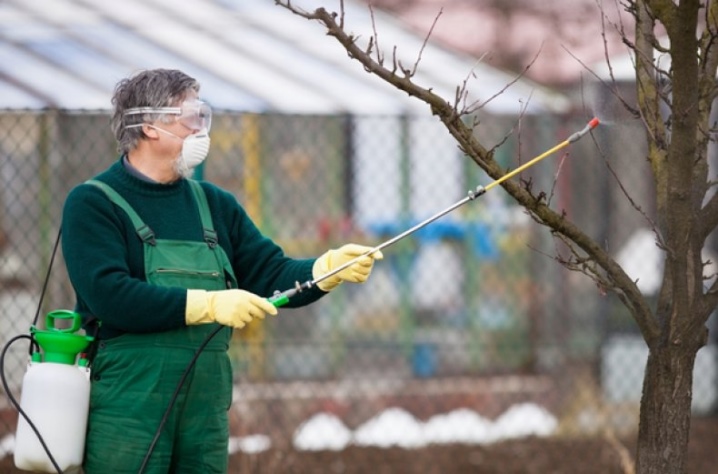
When and where to plant?
Cherries are planted in the spring so that young trees have enough time for rooting and subsequent full growth. An important factor in this case is the temperature required for good heating of the land on the site. In this case, the landing is best done after sunset. Most gardeners prefer to harvest seedlings in the fall and bury them in the ground before spring planting.
The main task is to preserve the material that appeared just before winter. This will require the following.
- Choose a place in the garden where snow lasts longer with the onset of spring, and dig a hole there with a depth of about 30-35 cm with a slope of 45 degrees.
- Place the seedlings with the root system in the direction of the groove.
- Sprinkle soil over the roots and a third of the trunks.
- Water abundantly.
- Cover the seedlings with pine branches so that the needles are outward, for effective protection from rodents.
- After the snow falls, it is thrown over the planting material with a layer of 30 cm to half a meter.
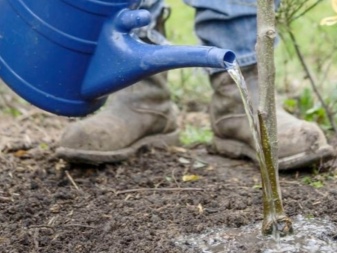

The soil for planting cherries in the garden is also prepared in the autumn months. It is important to consider that cherries love good lighting, as well as sandy loam, drained sandy and loamy soil. If it is acidic or alkaline, then it will be necessary to scatter lime or dolomite flour (about 400 g per square meter) on the site and dig it to the depth of a bayonet.
It is important not to apply organic fertilizers at the same time. It is strongly not recommended to plant a crop in places with closely lying groundwater, as well as in lowlands where stagnant water is possible.

Preparation
At the preparatory stage, you will need to take care of the availability of high-quality planting material, as well as its safety until the right moment. One of the key criteria for choosing seedlings is their age. The best option is 2-year-old specimens with a stem of 0.65 m and trunks of 2-2.5 cm in diameter. It is best to have skeletal nets at least 0.6 m in length.
Planting holes
Pits for landing with a diameter and depth of up to 0.8 and 0.5 m, respectively, are dug in advance. Experienced gardeners are advised to do this about 6 months before transferring the planting material into the ground to a permanent place. If we are talking about spring planting, then the holes are made in the fall. Those who prefer to plant fruit trees in early autumn will have to take care of them no later than early summer.
At the same time, the pits themselves are filled with a mixture of sand, humus, peat and fertilizers.
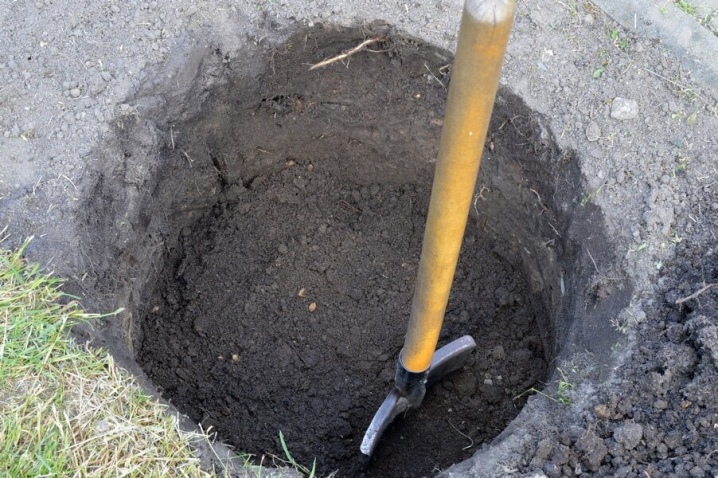
Roots
3-4 hours before planting, the root system is placed in an aquatic environment.... This has a beneficial effect on the activation of the necessary biological processes. If damaged areas or foci of rot are found on the roots, they should be carefully cut off with a sharp tool.
A mound is formed from a mixture of fertilizers and fertile soil in the hole, on which the roots of the seedling are carefully straightened. After the pit is completely covered with soil. It is important to remember that the root collar should be located 5-7 cm above ground level. If a material with a closed root system is planted, then the mentioned hill in the hole is not needed. In this case, it is recommended to equip the drainage and nutrient layer.
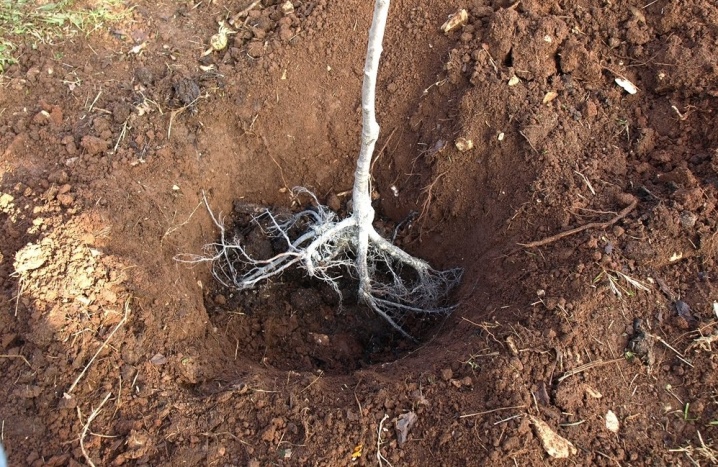
How to plant correctly?
First of all, you should pay attention to the spacing between seedlings. When planting several trees, there should be at least 3 meters between them. If we are talking about cross-pollinated trees, then you will have to place in close proximity to each other from 4 varieties. Tall and low individuals are planted according to the 3x3 and 2.5x2 m scheme, respectively. In situations with self-pollinating plants, this rule does not make sense to apply.
The cherry planting algorithm itself is as follows.
- Remove the top layer of soil and prepare a mixture with the addition of humus.
- Add wood ash (1 kg), potassium chloride (25 g) and superphosphate (40 g) to the substrate. If the seedlings are placed in clay soil, then a bucket of sand must be added.
- Drive a peg in the center of the hole so that it is located 30-40 cm above the ground level.
- Pour the prepared soil mixture in the form of a cone.
- Place the seedling on the north side.
- Spread the root system up the hill.
- Gradually fill the pit, gently ramming the ground to eliminate voids.
At the final stage, around the seedlings, it is required to form a hole with a diameter of about 30 cm with a small roller of earth and pour a bucket of water into it. After complete absorption, the neck of the root system of the seedling will be directly above the ground, it will be necessary to mulch the near-trunk zone with peat, humus or sawdust. All that remains is to tie a young tree to a peg.
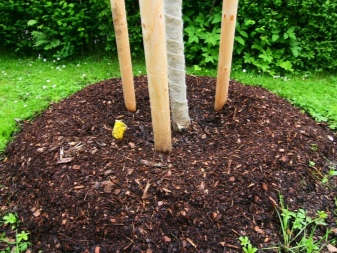
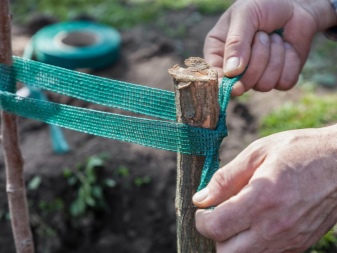
Watering and feeding
Many novice gardeners are interested in how and how much cherry can be watered at different stages of cultivation, as well as how to fertilize it so that it gives good fruits. Watering the crop is carried out so that in the immediate vicinity of the tree the soil is sufficiently saturated to a depth of 0.45 m. At the same time, it is important not to allow excessive irrigation so that the earth does not start to sour.
The first time young cherries are watered after flowering is complete, combining this process with the introduction of top dressing. The next run will be required during the ripening of the fruit. From 3 to 6 buckets are poured under each unit of the orchard.
It should be noted that the volume in this case is determined by weather conditions in a specific period of time.
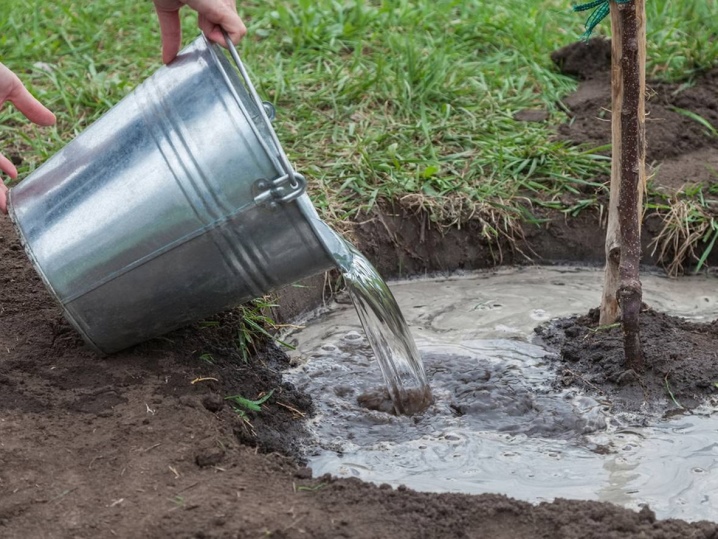
Young specimens that have not yet borne fruit are irrigated twice a month, and weekly in hot conditions. After all the leaves fall off, the plants are equipped with the so-called water-charging irrigation. The purpose of such an agrotechnical measure is to ensure that the soil is well moistened to a depth of 80 cm. As a result, a supply of moisture is provided, which is necessary to increase winter hardiness. It is no secret that moist soil freezes much more slowly.
Organic fertilizers are required for cherries every 2-3 years. Such dressings are used, as a rule, in the autumn. Also, in the fall, plots are fertilized with minerals. Nitrogen fertilizers (ammonium nitrate and urea) are applied at the rate of 15-20 and 10-15 g per "square", respectively. This should be done in early spring, as well as after the trees have finished flowering. It is important to remember that it is necessary to fertilize not only the trunk circles, but the entire area with cherries. Before feeding, it is watered abundantly.
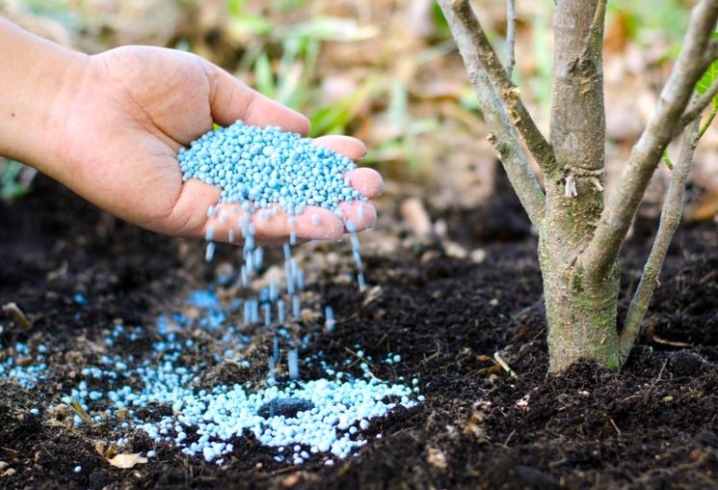
Pruning
The first stage of such processing occurs at the beginning of the spring period. This refers to March and the time for the swelling of the kidneys. If you do not have time to do the pruning in time before the start of sap flow, then it is better to postpone it, since the shortened branches can dry out. In some cases, pruning is also possible in the summer, namely, immediately after picking ripe berries to form a crown. In autumn, the described activities should be carried out at the final stage of the growing season. Sanitary pruning, which aims to remove diseased and damaged shoots, is carried out at any time.
For first-year seedlings, up to 6 of the strongest branches are left. The rest of the shoots are removed "on the ring", that is, without leaving hemp. In this case, the sections must be carefully processed with garden pitch. It is important that the remaining branches point in different directions and grow from the trunk at an interval of at least 10 cm.
Starting from the second year of a cherry's life, during its formation, shoots and branches that grow inside the crown of the tree are removed. In parallel, the shoots are cut out on the trunk.
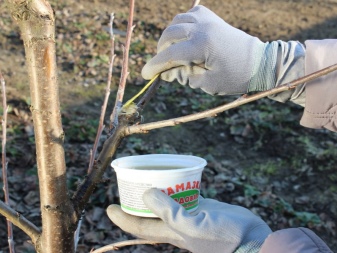
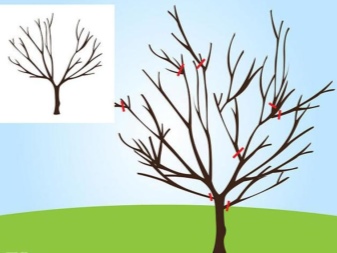
In situations with tree-like varieties, it is important to shorten the branches actively stretching up in a timely manner. Otherwise, harvesting will be much more difficult. It is worth considering that such trees will eventually have new skeletal branches, of which an adult specimen should have 12-15 pieces. If bushy cherries grow in the garden, then their shoots must be cut to 50 cm.
Particular attention should be paid to the spring processing of cherry trees and bushes. As noted, pruning is carried out before the start of sap flow. The only exception in this case will be spring after winter with strong and prolonged frosts. It is important to immediately treat the wounds, since the plant tolerates the described procedures very painfully during this period.
In the fall, cherries are pruned much less often. The key point is that competent and timely processing can increase yields. At the same time, it is possible to minimize the risk of developing infections, the treatment of which will require significant costs, including temporary ones. It is also highly undesirable to leave a plant with damaged and even more diseased branches in the winter. The main task of the gardener when performing autumn pruning is to choose the moment between the end of the growing season and the beginning of the first frosts.
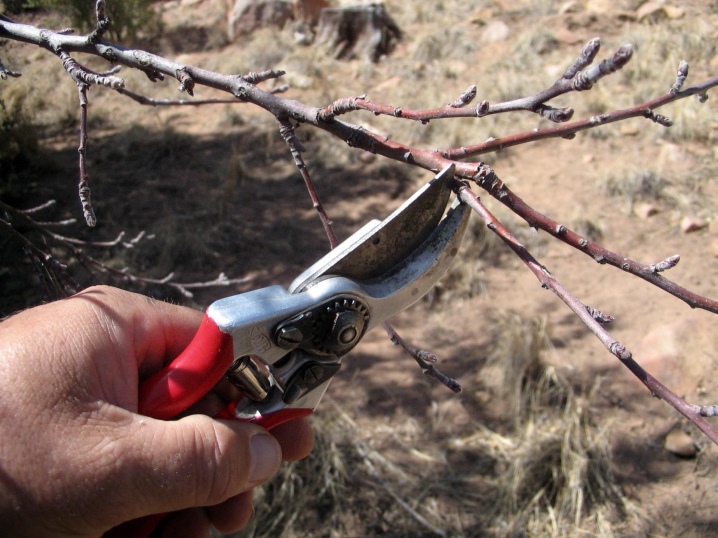
Preparing for winter
In the overwhelming majority of cases, an adult and actively bearing cherry tree is able to endure the winter period on its own. In this case, we are talking about difficult weather conditions, involving strong, prolonged frosts. However, despite the unpretentiousness and endurance of the culture, it will be useful to take care of the protection of the plant. This component of care is especially relevant for young animals.
It is important not to forget that the key to preparing for the winter is the processing of the trunks. In autumn, they and their skeletal branches need to be whitewashed with lime with the addition of copper sulfate.
And one of the most effective ways to protect cherries from frost is to cover the near-trunk circle with snow. Sawdust will need to be poured over the formed snowdrift.
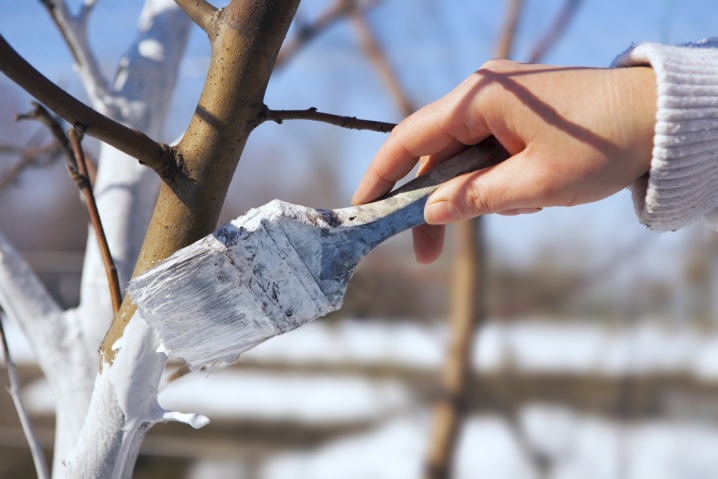
Treatment against diseases and pests
In order to prevent diseases and in order to effectively control pests, modern gardeners successfully use a whole arsenal of chemicals. And in this case we are talking about two main categories.
- Phytoncides - for the prevention and treatment of diseases.
- Insecticides - for the destruction of pests of all types.
With an uncritical potential danger, time-tested folk remedies will be quite enough. For example, a decoction of nightshade will be effective in the fight against caterpillars, beetles and other pests.
With the onset of spring, it is imperative to treat the stems with Bordeaux liquid. This approach allows you not only to avoid sunburn. In parallel, insects hibernating in the bark are effectively destroyed. It is important to remember that during cherry blossoms, processing is not performed - in addition to harmful ones, insects that pollinate trees and shrubs can also die.... The inevitable consequences of this will be a significant reduction in volumes and a deterioration in the quality of the crop.
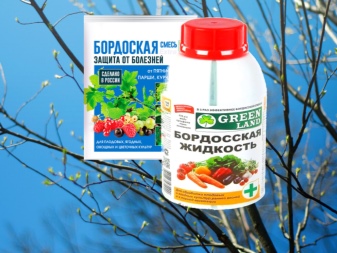
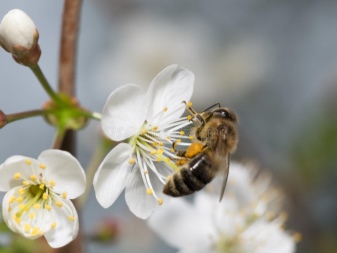
Taking into account the types of pests, the processing of cherries is as follows.
- Weevils - spraying with a 10% solution of karbofos in early spring. Folk remedy - a decoction of fragrant chamomile.
- Ants - a rag soaked in diesel fuel or kerosene is laid out near a tree or bush.
- Butterflies and flies - processing immediately after the completion of flowering with such means as "Inta-Vir", "Karbofos", "Fufanon", "Lightning" and others.
- Worms and caterpillars - after the leaves fall off, they are burned along with the nesting pests. In the spring, plants are sprayed with a weak (0.2%) chlorophos solution. In order to control the rose budworm before the buds bloom, you can treat it with a 6% oil emulsion. In addition, manufacturers offer a fairly wide range of chemicals.
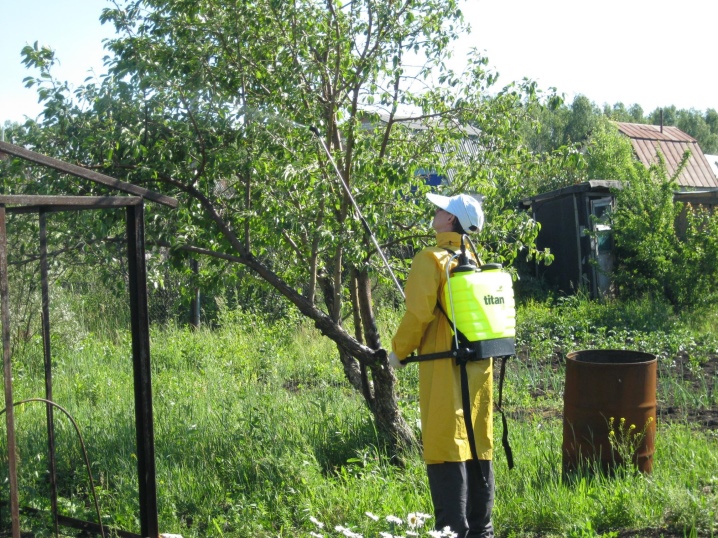
The list of the most common cherry diseases includes:
- moniliosis and coccomycosis;
- brown spot;
- scab;
- root cancer;
- fruit rot;
- witch's broom;
- cherry mosaic;
- clasterosporium disease.
Timely processing will help protect cherries.
In addition to vitriol (copper and iron), urea and Bordeaux liquid, the following agents are used.
- Horus - a systemic fungicide that has the ability to penetrate young leaves and is characterized by a duration of action. Treatment with "Horus" is a high-quality and effective prevention of dangerous fungi.
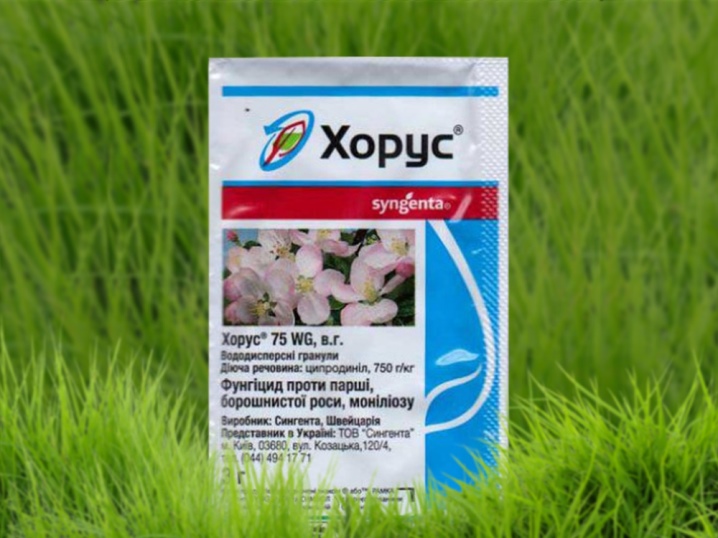
- Fitosporin - a modern microbiological preparation that prevents and fights against bacterial and fungal diseases of stone fruits.
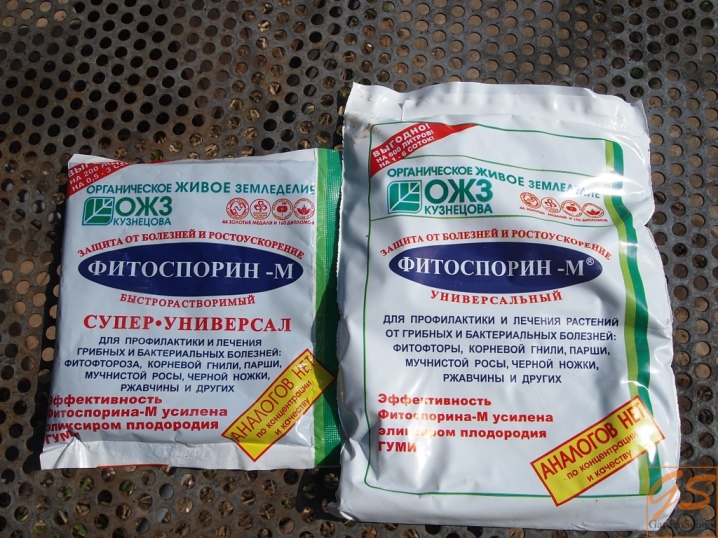
- "Trichopol" - an antifungal agent that is sprayed on plants several times per season.

The nuances of care at different periods
A cherry orchard should be looked after in a predictable way, taking into account certain nuances depending on the region. And first of all, we are talking about climatic features.So, to grow good, fruitful trees in the Moscow region, it will take more effort than in the southern regions.
But even taking into account the fact that the culture in question does not require constant care all year round, it is recommended to follow the general rules. For example, when growing young stock, fertilization is not required for the first 2-3 years. Care in such situations comes down to:
- shallow loosening of the soil in the near-trunk zone;
- watering;
- removing weeds;
- pruning;
- fight against diseases and pests.
Fruiting plants require a lot of effort and time, taking into account the time of year.
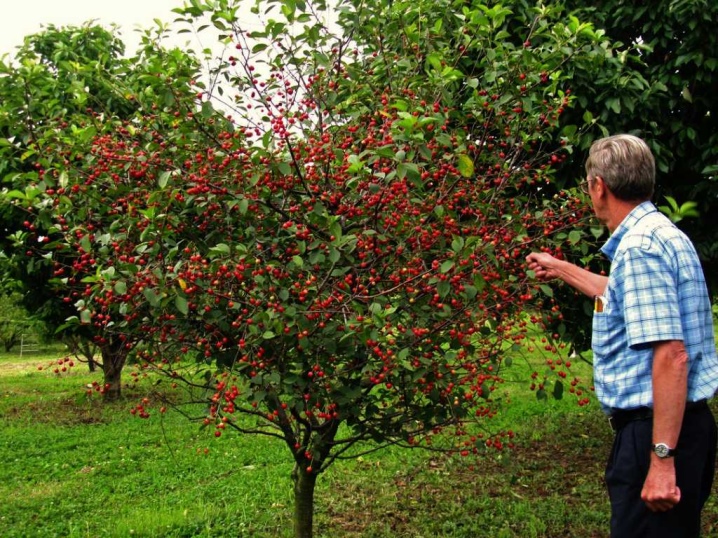
Spring
In springtime, subject to rainy and cold weather, cherry trees can be sprayed with a solution of honey (1 tablespoon per liter of water). This is done in order to attract insects for pollination. The soil is loosened several times per season. Before the buds begin to bloom, the cherries will need to be pruned. At the same time, root shoots are removed, the near-stem areas are mulched with compost or sawdust.
Every spring, cherries need to be treated for diseases and pests, so that later you do not have to treat the plants. Before bud break, it is recommended to treat the plants with a 7% urea solution. This allows you to get rid of worms and other pests that have successfully overwintered in the bark, as well as in the soil. In parallel, the cherry is fed with nitrogen. It is important to carry out the treatment before the start of the sap flow process, otherwise a 3% solution of copper sulfate or Bordeaux liquid will be the best option.

Summer
During this period, the main task of the gardener is to provide fruit trees, including cherry ones, with sufficient nutrients and moisture. At the same time, effective protection against pests and diseases remains relevant. But one of the most important things is watering, especially in hot weather.
Cherries often shed some ovaries during the summer months. And as soon as this happens, nitrogen fertilization is required. After 3-4 weeks, fertilizers containing potassium and phosphorus will also be needed.
And, of course, the main event of the summer period is ripening and harvesting.
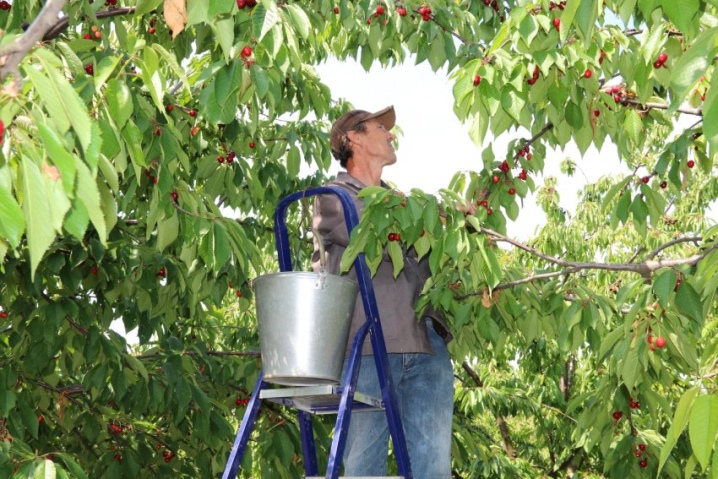
Autumn
The autumn months are the period when mineral and organic fertilizers are added to the near-stem areas of cherry trees for digging.... The depth of the latter for young and adult, fruiting trees should be 10 and 15-20 cm, respectively. Such agrotechnical measures are carried out after the beginning of the yellowing of the foliage. The best option is a few days after a good rain or watering.
Another important component of autumn care is spraying the plants with a 4% urea solution. Do not forget about water-charging irrigation as part of preparing trees for wintering. In October, it is recommended to place rodent traps around the site. Whitewashing of boles and bases of skeletal branches will be no less important. November is the time when fallen leaves are removed and trunks are mulched. At the same time, the trunks of the young are covered with pine spruce branches.

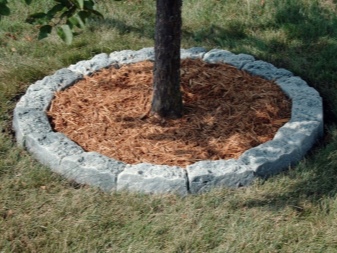













The comment was sent successfully.